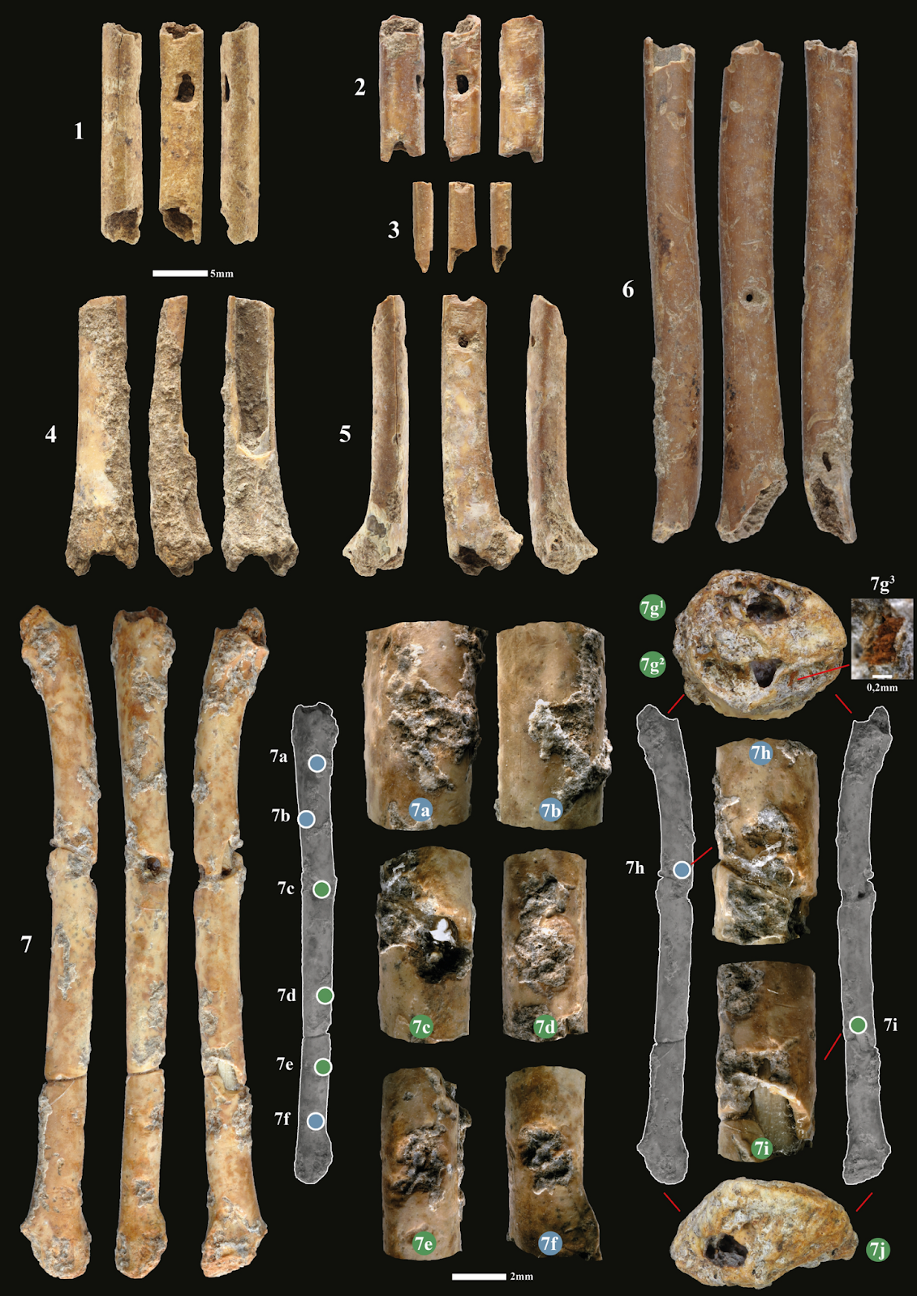Archeologists working in Israel have found what they believe could be the “earliest evidence of the use of sound in hunting.”
The 12,000-year-old whistles were made from the wing bones of Eurasian coot and teal, and replicas manufactured from mallard bones produce sounds that imitate birds of prey. Researchers believe these sounds were used to hunt waterfowl by scaring them into the air and making them easier to capture.
“This discovery provides important new information on hunting methods and supplements the various prehistorical tools that mark the start of the transition from agriculture and the cultivation of plants and animals in the southern Levant,” one of the study’s authors Dr. Hamoudi Khalaily of the Israel Antiquities Authority, said.
Researchers published their findings in Nature Scientific Reports, which includes audio of the replica whistles.
The whistles–what the scientists call “aerophones”–were discovered in the Eynan/Ain Mallaha site in the Hula Valley of northern Israel. They were unearthed in 1998, but their purpose was not immediately obvious. Another author of this study, Dr. Laurent Davin, noticed marks on seven small wing bones and soon realized those marks were actually tiny holes. Researchers used modern CT imaging to identify additional characteristics of these whistles and eventually identified six fragments and one complete whistle.
“One of the flutes was discovered complete. So far as is known it is the only one in the world in this state of preservation,” added Davin and Khalaily. “The replicas produce the same sounds that the hunter-gatherers may have made 12,000 years ago.”

Image: “Bone aerophones from Eynan-Mallaha (Israel) indicate imitation of raptor calls by the last hunter-gatherers in the Levant.”
The complete whistle measures only about 6 centimeters in length and 4 millimeters in width. It features finger holes designed to manipulate sound, and the authors say it would have been extremely difficult to play. It’s unclear why the whistle makers decided to use such a small bone since larger bones would have been available. But researchers speculate the makers were after a specific high-pitched sound, and only these small bones were able to produce it.
To determine how the whistles were used, the team fashioned replicas of the originals using wing bones from mallards. They compared the sounds made by these whistles with the calls of 58 bird species that were found in Eynan/Ayn Malaha and identified the Eurasian sparrowhawk and the common kestrel as the closest comparisons.
Why ancient hunter-gatherers would have wanted to imitate the calls of raptors is up for debate, but the study’s authors proposed several possibilities. One is that these whistles were used for hunting. Rather than imitating the sound of waterfowl, as modern duck calls do, these whistles could have been used to scare target species into the air. If a hunter positioned himself near the flock, the resulting confusion could have made the birds easier to catch.
Another theory is that the whistles were used to catch the kestrels and hawks themselves. These birds had cultural and symbolic significance to people groups in this area, and the birds’ talons were used ornamentally and to pierce bones to produce new whistles.
A related hypothesis is that the whistles were used in religious music and dance ceremonies. Researchers point to the Sun Dance of the North American Plains Indian tribes, which included bone whistles that imitated the sound of the symbolically valued spotted eagle. Hunter-gatherer people groups in this region may have used these whistles in a similar manner.
However these whistles were used, they offer an important signpost in the history of societal evolution. This study adds “crucial evidence for the acoustic phenomenon of sound manipulation from a cultural context,” the authors conclude. “Which marks a significant change in the history of humankind—the transition into complex agricultural societies manipulating their vegetal and animal environments and accelerating the emergence of new ways of life.”
Feature image via Yoli Shwartz, Israel Antiquities Authority YouTube.




